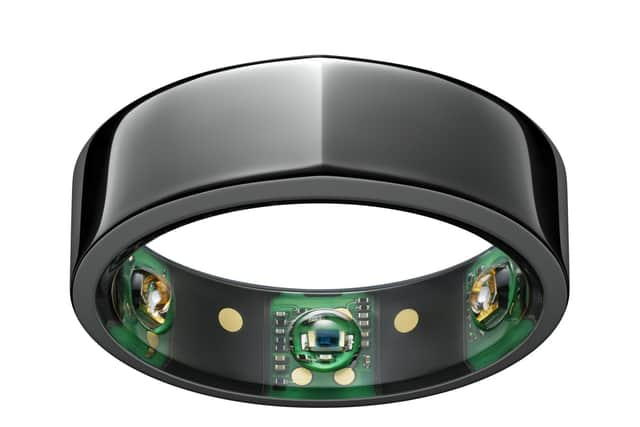A smart ring could spot Covid-19 even when there seem to be no symptoms
and live on Freeview channel 276
A smart ring that monitors vital signs could alert wearers to conditions such as Covid before any symptoms show
Researchers say the gadget can detect fever when it isn't noticed by the patient themselves and when they don't have a cough or any other tell tale signs they contracted the disease.
Advertisement
Hide AdAdvertisement
Hide AdThey now hope the devices could be used in an early warning system and replace unreliable thermometer readings and eliminate the need for patients to wait for symptoms to occur.


It has even been able to detect changes when the patient was asymptomatic and never went on to have a bad case of the virus.
The study was carried out by a team from the University of California San Diego (UCSF).
Professor Ashely Mason, from the Department of Psychiatry and the Osher Center for Integrative Medicine at UCSF, said: "If wearables allow us to detect Covid-19 early, people can begin physical isolation practices and obtain testing so as to reduce the spread of the virus.
Advertisement
Hide AdAdvertisement
Hide Ad"The hope is that people infected with Covid will be able to prepare and isolate sooner, call their doctor sooner, notify any folks they've been in contact with sooner, and not spread the virus."
The study was carried out on a small group of just 50 participants who wore the Oura Ring, a wearable sensor made by the Finnish startup Oura, which pairs to a mobile app.
The ring continuously measures sleep and wakefulness, heart and respiratory rates, and temperature.
Researchers discovered that fever often started before subjects were reporting symptoms and was detectable for people who never noticed any other symptoms.
Advertisement
Hide AdAdvertisement
Hide AdThe study's first author, Professor Benjamin Smarr, from the Department of Bioengineering and the Halicioglu Data Sciences Institute, said: "It supports the hypothesis that some fever-like events may go unreported or unnoticed without being truly asymptomatic.
"Wearables therefore may contribute to identifying rates of asymptomatic illness as opposed to unreported illness, which is of special importance in the Covid-19 pandemic.
"This raises the question of how many asymptomatic cases are truly asymptomatic and how many might just be unnoticed or unreported.
"By using wearable technology, we're able to query the body directly."
Advertisement
Hide AdAdvertisement
Hide AdThe results are the first to be published as part of a much larger study of more than 65,000 Oura wearers worldwide - many of whom are healthcare workers.
The team added the devices have a huge advantage over current temperature reading techniques which are used at pubs, airports, and other locations.
Despite the wide-spread use of temperature reading guns, the team behind the study say the devices fall far short - missing a large proportion of Covid cases.
This is because, while the guns can measure temperature like a thermometer, a whole range of factors can affect body temperature and a high temperature for one person, might not be high for another.
Advertisement
Hide AdAdvertisement
Hide AdSimilarly, people drop in and out of fever - meaning a single temperature check is like "hearing one syllable of a conversation", say the team.
Prof Smarr said: "Context matters in temperature assessment."
Instead, the smart ring measures the body temperature of the wearer all the time, and can send out an alert when it spikes - giving what the researchers claim is a truer reading.
Prof Mason said: "Many factors impact body temperature. Single-point temperature measurement is not very meaningful.
Advertisement
Hide AdAdvertisement
Hide Ad"People go in and out of fever, and a temperature that is clearly elevated for one person may not be a major aberration for another person. Continual temperature information can better identify fever."
The small proof of concept test has been published in the journal Scientific Reports but the researchers are also using data from the larger study to develop an algorithm from data collected by wearable devices that can identify when it appears that the user is becoming sick.
The team now plans to test the algorithm in a new study of 4,000 more ring wearers.
It is thanks to our loyal readers that we can continue to provide the trusted news, analysis and insight that matters to you. For unlimited access to our unrivalled local reporting, you can take out a subscription here and help support the work of our dedicated team of reporters.